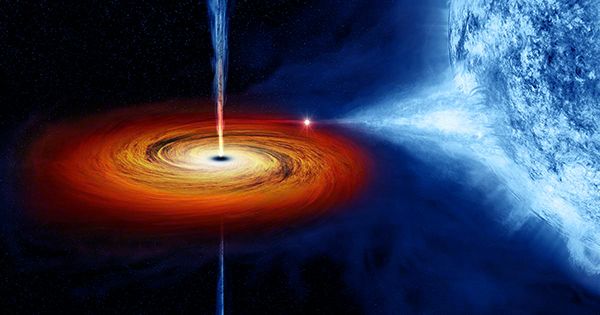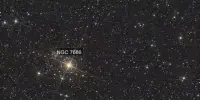The Earth is surrounded by hundreds of young stars in a 1,000-light-year-wide gap, but how did those stars form?
Astronomers from the Center for Astrophysics | Harvard & Smithsonian (CfA) and the Space Telescope Science Institute (STScI) reconstructed the evolutionary history of our galactic neighborhood in a paper published in Nature on Wednesday, showing how a chain of events that began 14 million years ago led to the creation of a vast bubble that is responsible for the formation of all nearby, young stars.
“This is really an origin story; for the first time we can explain how all nearby star formation began,” says astronomer and data visualization expert Catherine Zucker who completed the work during a fellowship at the CfA.
All newborn stars and star-forming regions within 500 light-years of Earth dwell on the surface of a gigantic bubble known as the Local Bubble, according to the paper’s core figure, a 3D spacetime animation. Scientists can now observe and understand the Local Bubble’s origins and impact on the gas around it, despite the fact that astronomers have known about it for decades.
The Source of Our Stars: The Local Bubble
The spacetime animation, created with a treasure of new data and data science approaches, depicts how a succession of supernovae that first exploded 14 million years ago pushed interstellar gas outwards, creating a bubble-like shape with a surface conducive for star formation.
When the first supernovae that created the Local Bubble went off, our Sun was far away from the action. But about five million years ago, the Sun’s path through the galaxy took it right into the bubble, and now the Sun sits just by luck almost right in the bubble’s center.
João Alves
On the surface of the bubble today are seven well-known star-forming regions or molecular clouds intense regions in space where stars can develop.
“We’ve calculated that about 15 supernovae have gone off over millions of years to form the Local Bubble that we see today,” says Zucker who is now a NASA Hubble Fellow at STScI.
According to the astronomers, the strangely formed bubble is not dormant and is slowly growing.
“It’s coasting along at about 4 miles per second,” Zucker says. “It has lost most of its oomph though and has pretty much plateaued in terms of speed.”
Data from Gaia, a space-based observatory launched by the European Space Agency, was used to calculate the bubble’s expansion speed as well as the past and present paths of the new stars developing on its surface.
“This is an incredible detective story, driven by both data and theory,” says Harvard professor and Center for Astrophysics astronomer Alyssa Goodman, a study co-author and founder of glue, data visualization software that enabled the discovery.
“We can piece together the history of star formation around us using a wide variety of independent clues: supernova models, stellar motions, and exquisite new 3D maps of the material surrounding the Local Bubble.”
Bubbles Everywhere?
“When the first supernovae that created the Local Bubble went off, our Sun was far away from the action,” says co-author João Alves, a professor at the University of Vienna. “But about five million years ago, the Sun’s path through the galaxy took it right into the bubble, and now the Sun sits just by luck almost right in the bubble’s center.”
Humans today have a front-row seat to the process of star generation occurring all around the bubble’s surface as they stare out into space from near the Sun. Nearly 50 years ago, astronomers proposed that superbubbles were widespread throughout the Milky Way.
”Now, we have proof, and what are the chances that we are right smack in the middle of one of these things?” asks Goodman.
She says that if gigantic bubbles are rare in our Milky Way Galaxy, it is statistically implausible that the Sun would be centered in one.
Goodman compares the discovery to a Milky Way that looks like a holey swiss cheese, with holes blasted out by supernovae and new stars forming in the cheese around the holes left by dying stars.
Next, the team plans to map out more intergalactic bubbles, including co-author and Harvard Ph.D. student Michael Foley, to gain a full 3D depiction of their locations, shapes, and sizes.
Identifying bubbles and their relationships will help astronomers better understand the role of dead stars in the creation of new stars, as well as the structure and evolution of galaxies like the Milky Way.
Zucker wonders, “Where do these bubbles touch? How do they interact with each other? How do superbubbles drive the birth of stars like our Sun in the Milky Way?”
Douglas Finkbeiner and Diana Khimey of the CfA are co-authors on the study, as are Josefa Gro?schedland and Cameren Swiggum of the University of Vienna, Shmuel Bialy of the University of Maryland, Joshua Speagle of the University of Toronto, and Andreas Burkert of the University Observatory Munich.
















